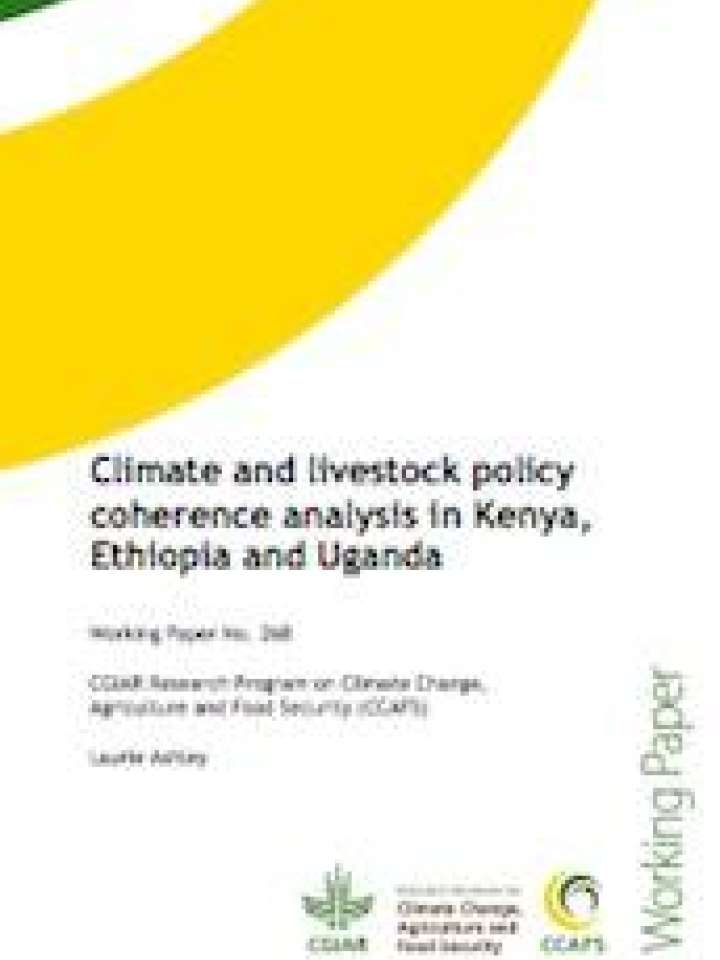Climate and livestock policy coherence analysis in Kenya, Ethiopia and Uganda
Livestock in Kenya, Ethiopia, and Uganda play an important role in food security, livelihoods, income, and gross domestic product (GDP). Livestock sector growth in response to growing demand for animal-sourced food requires policy guidance to avoid increasing livestock sector exposure to climate risks and increasing sector greenhouse gas emissions. This analysis examines 40 climate, agriculture, livestock, development, land, and environment policies across the three countries for strength and coherence in addressing livestock sector adaptation and mitigation. The policy context is dynamic, with numerous policies developed since 2015, particularly in the climate and development policy areas but also for livestock, agriculture, and land. Countries are clearly working to integrate livestock climate change strategies into climate and other policy areas, although at times with limited detail and coherence.
In each country, there are examples of strong policy guidance for livestock sector adaptation. Kenya in particular has strong policy coherence around livestock adaptation strategies across policy areas. In Ethiopia, there is policy coherence for livestock adaptation in development policy and more recent climate policy but a lack of adaptation consideration in livestock, agriculture, land, and environment policies. In Uganda, a sub-set of climate policies provide strategies for livestock adaptation, however, other policy areas are weak on this integration.
Explore further
